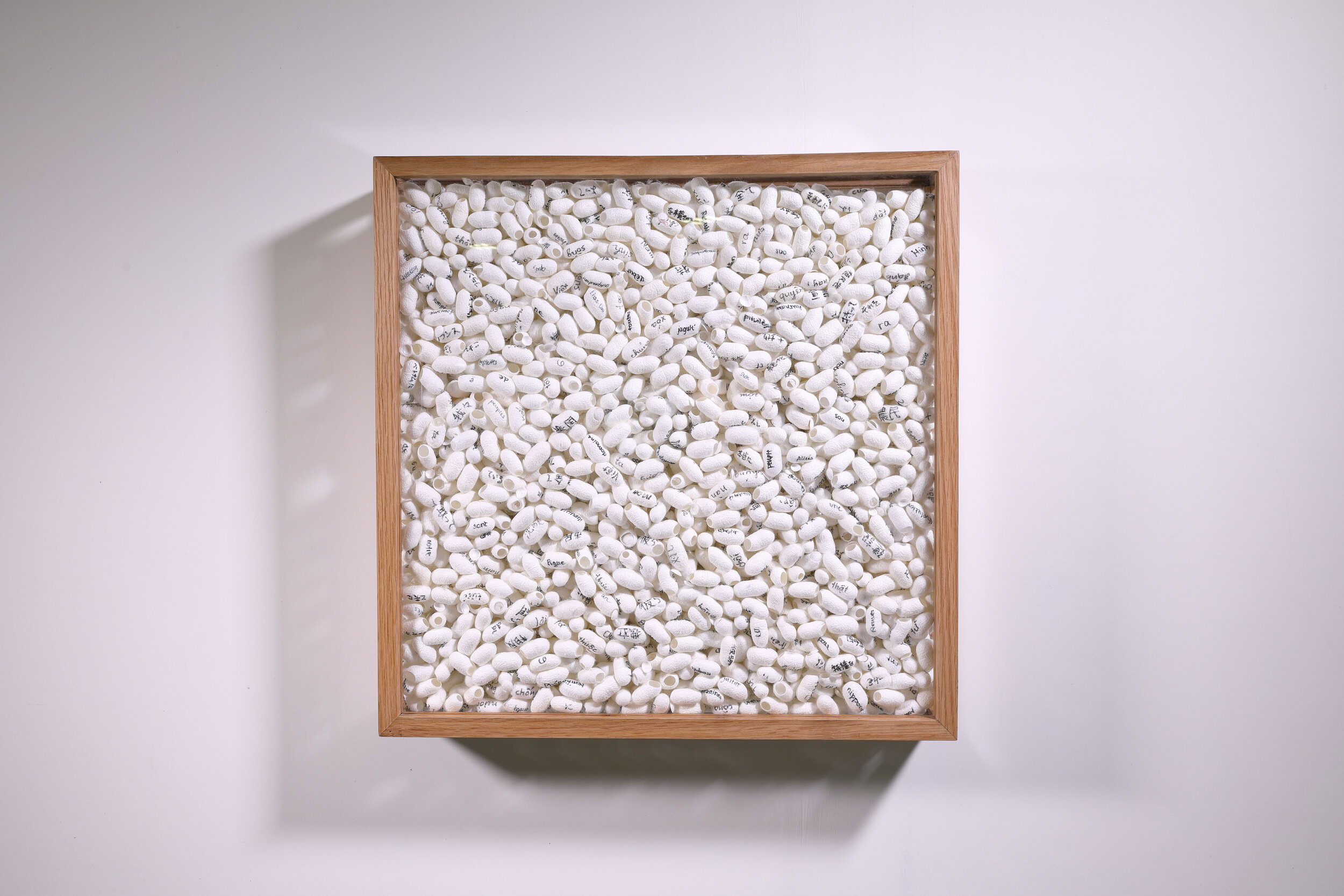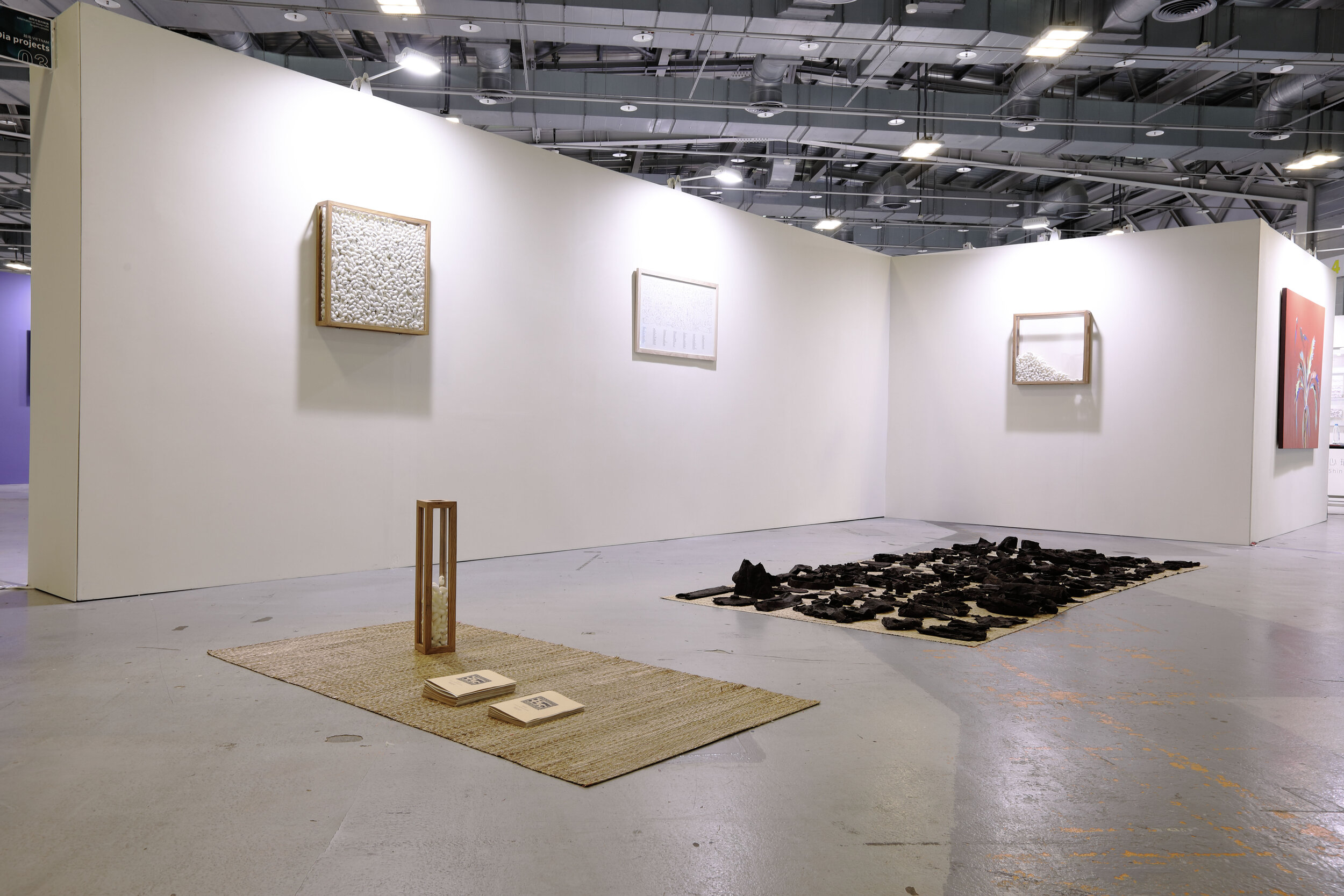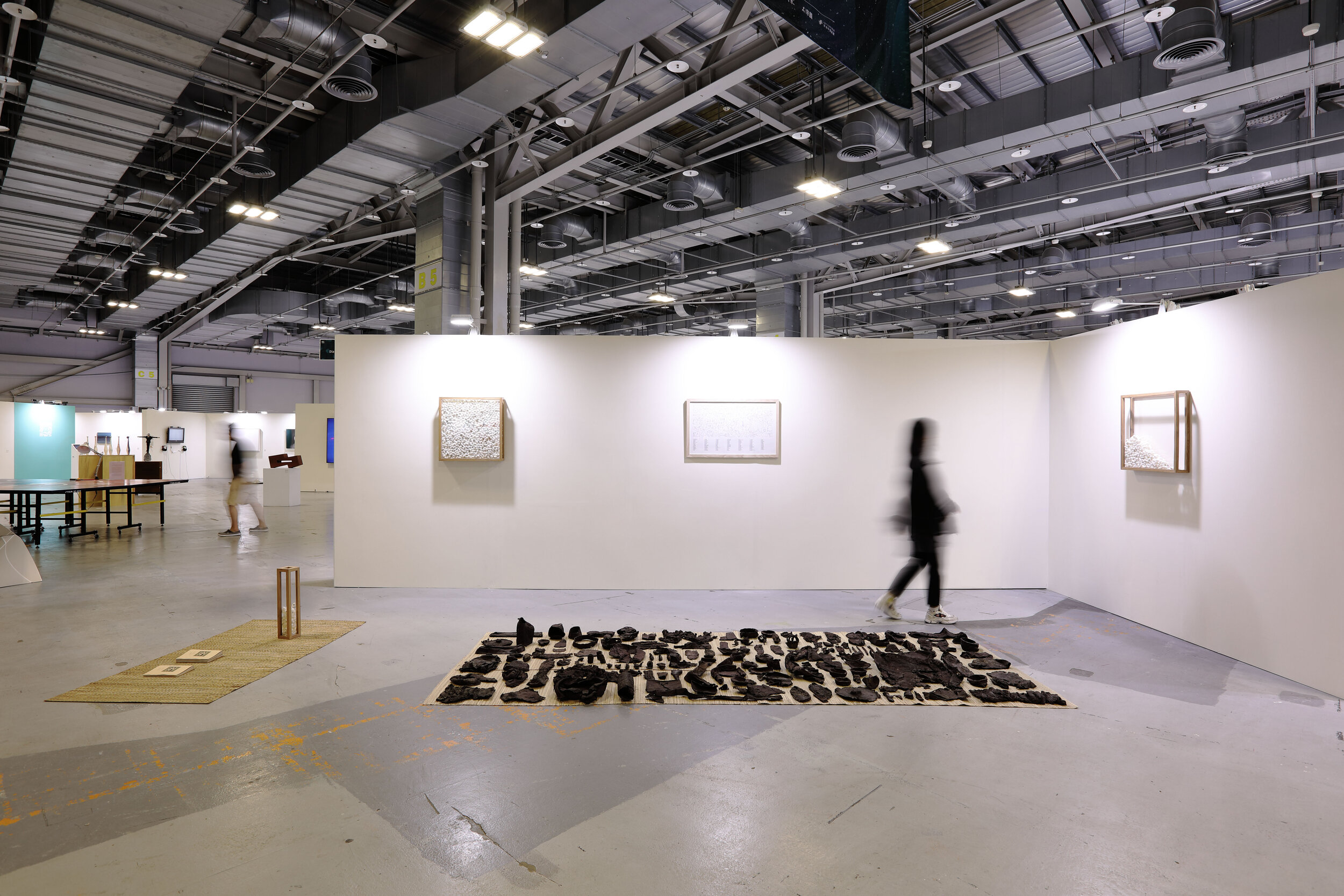home | land | nước | nhà
2014
duo by Lê Hiền Minh & Cam Xanh at 2nd Taiwan Annual
When technically defined, ‘home’ amounts to little more than the building in which one lives. When defined conceptually however, ‘home’ becomes a feeling that is universally identifiable as one of deep affection and longing.
Lê Hiền Minh builds her idea of home from the objects that filled her life when living in the USA: her television, sofa, tables, chairs, pots, bowls, chopsticks, paintbrushes, tubes of paint, handbags, cosmetics… Upon moving back to Vietnam it was the thought of leaving these inanimate objects that evoked more feelings of loss than the building of the house she lived in. For Lê Hiền Minh the objects were a tangible representation of the memories and experiences that made her house a home, and so she chose to cast each of them using traditional Vietnamese Dó paper. Cam Xanh alternatively presents us with the physical home of the silkworm: the silk cocoon. For the silkworm, a cocoon is the sanctuary it builds itself, eager for safety in preparation for its metamorphosis. Whilst we might not build our own houses, it's clear from the artists that ‘home’ is an idea of our own construction.
What is most striking is how both artists interpret the idea and feeling of home as subject to change. Cam Xanh uses two of Vietnam’s famous Declarations of Independence—the 10th century poem Nam Quốc Sơn Hà (Mountains and Rivers of the Southern Country) declaring independence from the Chinese, and the 1945 speech from Ho Chi Minh decrying the French and Japanese occupation—to demonstrate the instability of the geopolitical borders that define countries. Whilst both the poem and speech reference the physicality of “our” land for which they are fighting, it is the emphasised emotional connection that makes it worth fighting for. Cam Xanh mounts her work to reflect the arbitrariness of these borders. The cocoons featuring the Vietnamese, French and Japanese translations of Ho Chi Minh’s 1945 speech that resulted in the division of North and South Vietnam stand stoically in two large square boxes—a reminder of the past and its historical influence on the present. Likewise, the smaller, single box containing the poem considered to be Vietnam’s first Declaration of Independence is just one of an unlimited edition. Small though it might be, it suggests an unfinished fight and has significant implications for Vietnam’s, as well as other previously occupied countries, continuing fight for autonomy and dominance in an increasingly globalised, still Western-led world. As a material the silk cocoon is strong despite being very fine, when unravelled it is almost invisible and yet one cocoon contains nearly one kilometre of thread. Like the silkworm, Southeast Asia has a history of being exploited but just as silk exports once played a major role in supporting the region’s economy, Cam Xanh uses the silk cocoon as a symbol to reflect countries such as Vietnam and others’ ever-expanding reach and presence on the world stage. The pieces’ varying appearance, as the cocoons are jostled in their boxes by the movement of each installation, only further demonstrates the passing of time and its accompaniment of unrelenting change.
Lê Hiền Minh’s work in contrast confronts a distinctly personal idea of change. Many of the objects she cast over a decade ago are no longer identifiable, even to herself. Objects that used to signify home now resemble the results of an archaeological dig and are displayed in the same manner. Her method is even similar to an archaeologist in that she would take the casts, dye them, leave them out in nature, or bury them before excavating and repeating the process. Basking in the summer sun, nature acts like a co-collaborator to Lê Hiền Minh’s work as it dries out the casts; burying them in winter’s snow nature helps freeze their memory in time. They still contain history, but now that history has become unrecognisable and impersonal. Time and experience have changed the meaning of these objects and altered the artist’s perception of what’s important and valuable to her. Her work is emblematic of the struggle to find how to live with oneself. With every installation she is left to consider how relevant each object remains to her and to find peace with an inevitable sense of loss.
Lê Hiền Minh’s work is a way for us to examine the past just as Cam Xanh’s work also looks back into history. Together they explore both individual and collective memory, and the implications of emotions on our actions: whether that be possessions we chose to keep or decisions we make whether to fight for something we feel is worth killing for. The past is activated in an attempt to understand the present and look ahead to its possible consequences for the future.
Notes on a name: Home | Land | Nước | Nhà
Thanks to the tonal accents of the Vietnamese language there can be multiple ways to read the title Home | Land | Nước | Nhà. Together ‘Nước Nhà’ means ‘homeland’ and can be read as a direct interpretation of the subject considered by both the works. Reversed however as ‘Nhà Nước’, the translation becomes ‘government’ and our attention is redirected from an emotional and sensitive definition of the land from which we come, to the systems that govern it. The connotation changes entirely as the term ‘government’ is heavily laden with implications of the political conflicts and tensions that come with running a country. Split apart ‘Nước’ could mean ‘water’ or ‘country’ whilst ‘Nhà’ means ‘home’ and is suggestive of the journey the artwork has taken overseas from Vietnam to Taiwan, as well as the troubled governance of the water that both separates and joins the two countries. By introducing the word ‘Land’ (Đất in Vietnamese) to make Land | Water, we are forced to consider the idea of what is used to define territories, and reminded of the similar history of conflict with larger neighbours that Vietnam and Taiwan both share.



